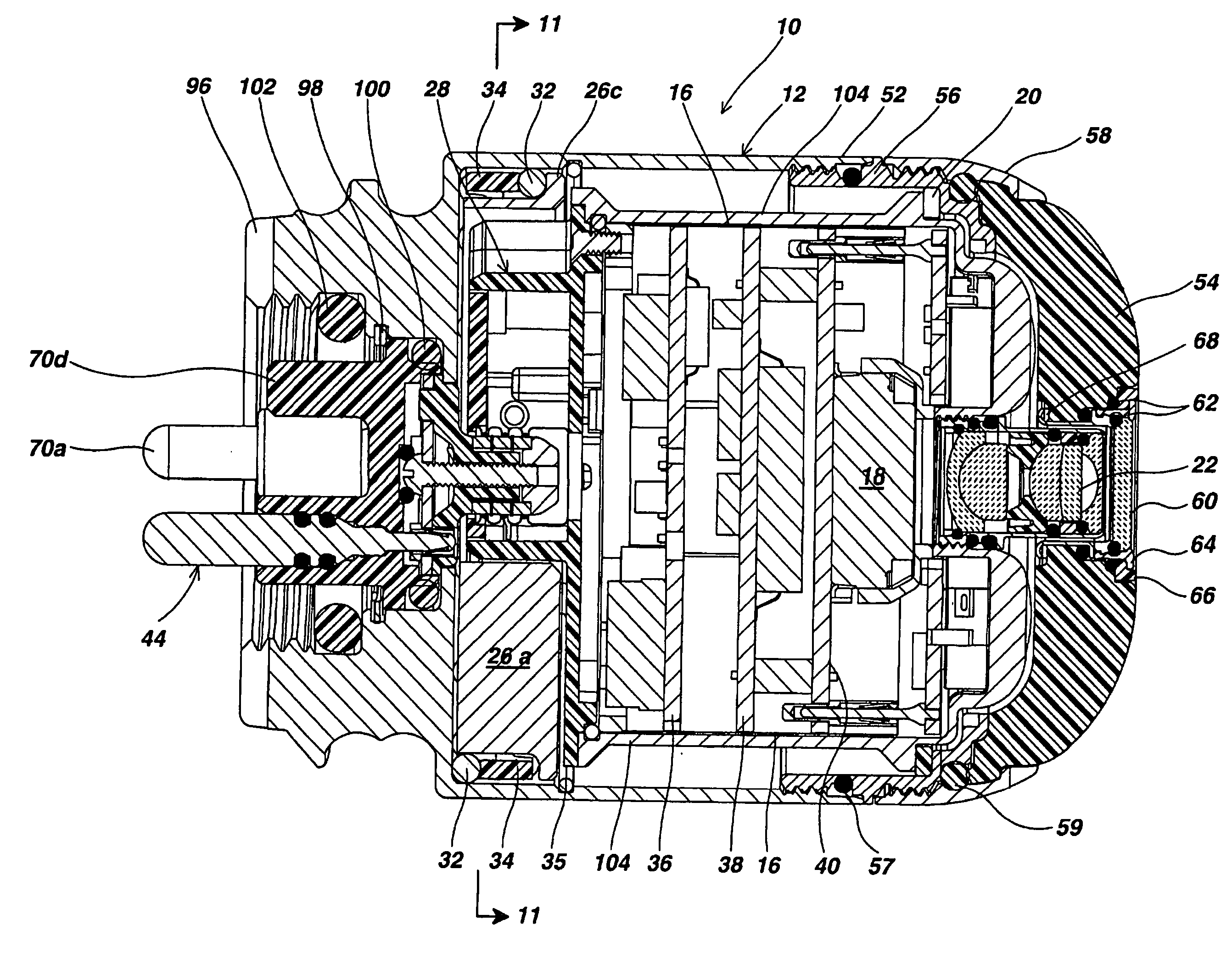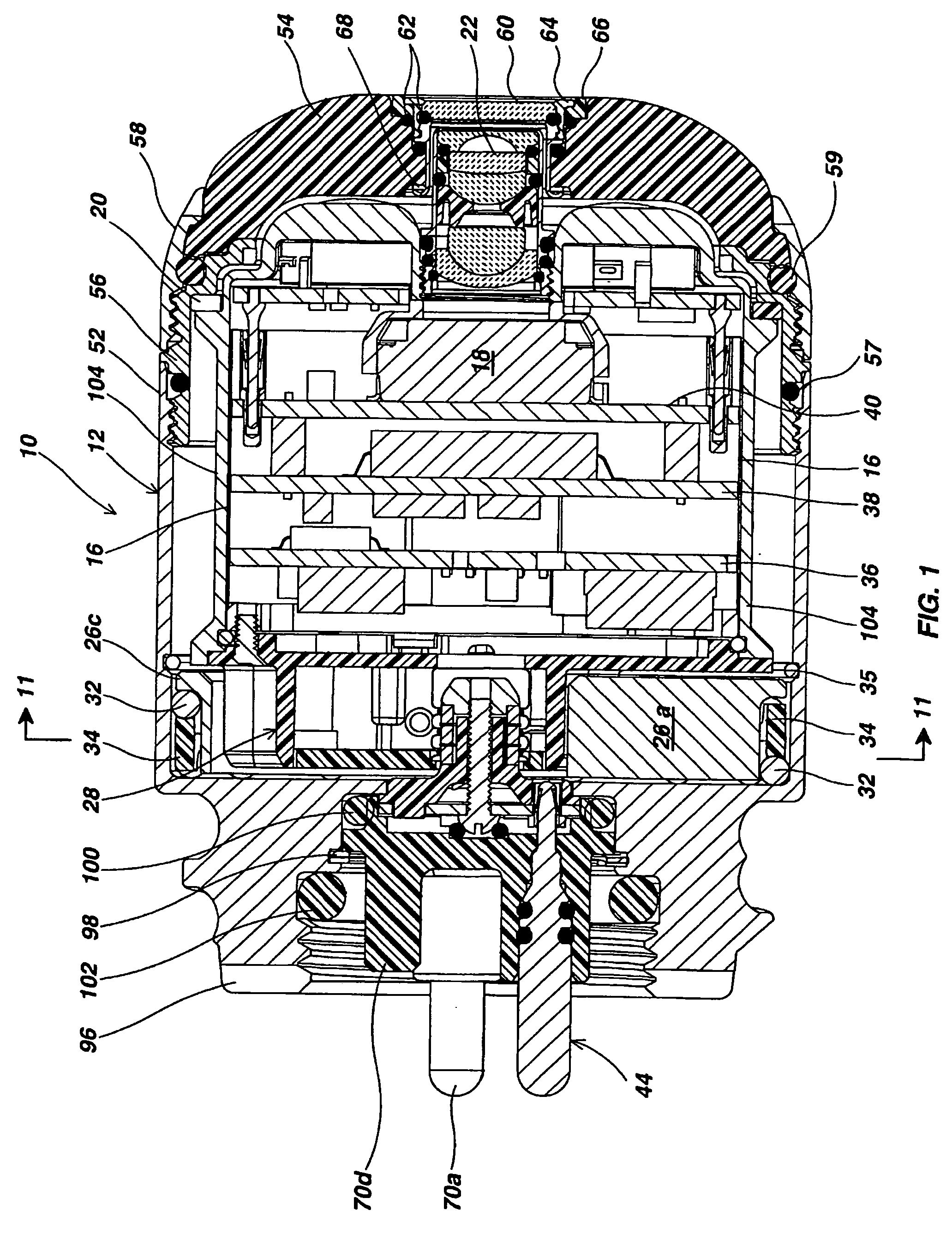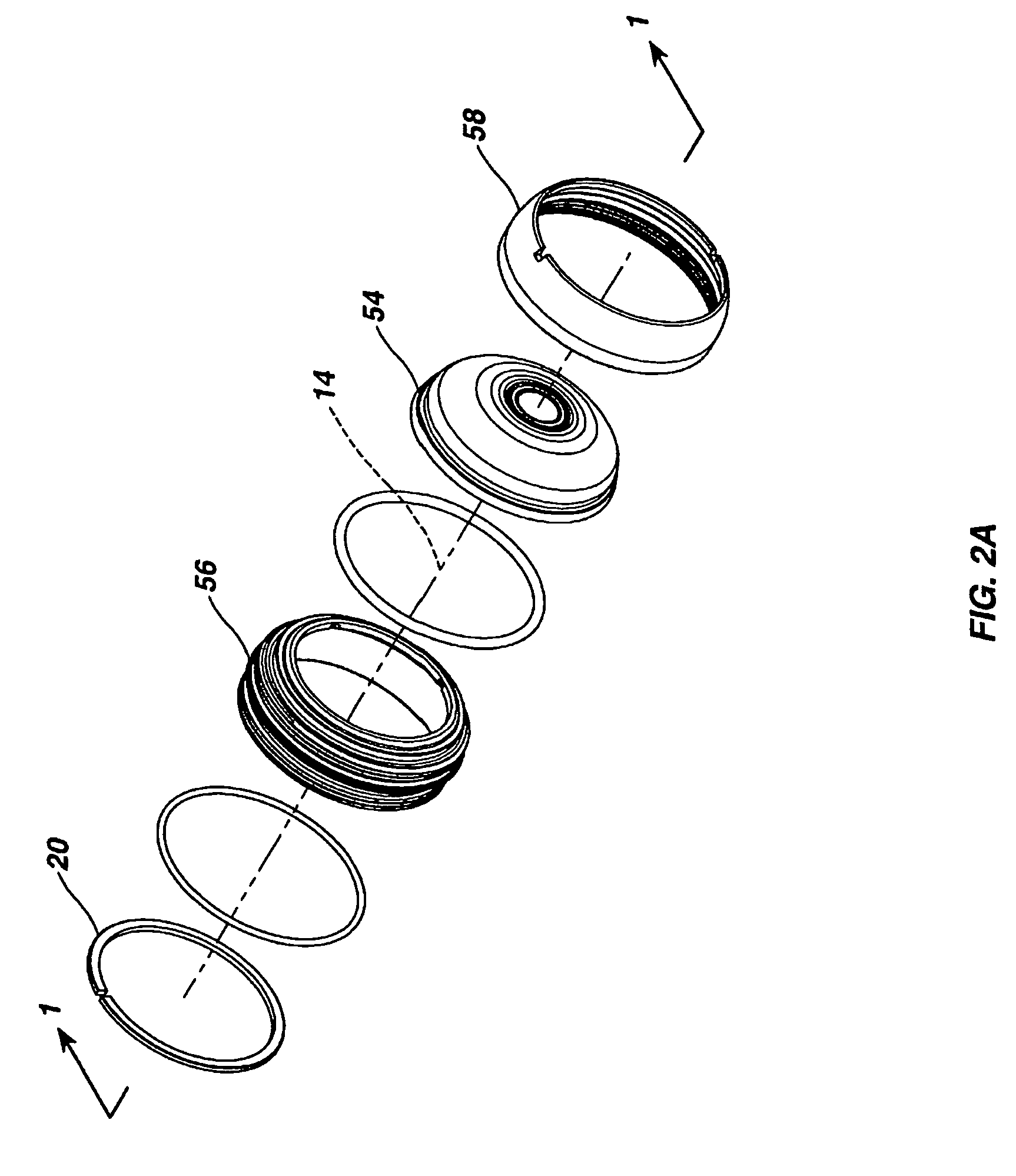Self-leveling camera head
a camera head and self-leveling technology, applied in the field of optical viewing systems, can solve the problems of not being able to manually correct, the video image can be tedious and annoying, and the camera head moves along the pipe at a regular interval
- Summary
- Abstract
- Description
- Claims
- Application Information
AI Technical Summary
Benefits of technology
Problems solved by technology
Method used
Image
Examples
Embodiment Construction
[0031] Referring to FIG. 1, a self-leveling camera head 10 includes a stainless steel generally cylindrical outer housing 12 having a central axis 14 (FIGS. 2A, 2B and 2C). A camera module assembly 16 (FIG. 2B) including an image sensor 18 is supported inside the outer housing 12 for free rotation around the central axis 14 via Teflon (trademark) or Teflon composite split-ring bushing 20. Other forms of low friction material may be used to fabricate the bushing 20. The image sensor 18 is preferably a charge coupled device (CCD) and has associated filter elements for producing output signals that represent a color image based on light reflected from scenes and objects within a field of view established by a lens assembly 22 illuminated by an LED assembly 24 (FIG. 2B). The image sensor 18 could also be a CMOS imager.
[0032] The lens assembly 22 (FIGS. 1 and 2B) focuses light on the image sensor 18. It is mounted in a threaded assembly so that it can be screwed back and forth along the...
PUM
 Login to View More
Login to View More Abstract
Description
Claims
Application Information
 Login to View More
Login to View More - R&D
- Intellectual Property
- Life Sciences
- Materials
- Tech Scout
- Unparalleled Data Quality
- Higher Quality Content
- 60% Fewer Hallucinations
Browse by: Latest US Patents, China's latest patents, Technical Efficacy Thesaurus, Application Domain, Technology Topic, Popular Technical Reports.
© 2025 PatSnap. All rights reserved.Legal|Privacy policy|Modern Slavery Act Transparency Statement|Sitemap|About US| Contact US: help@patsnap.com



